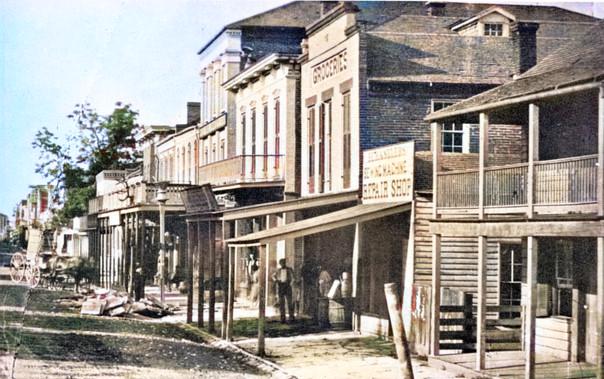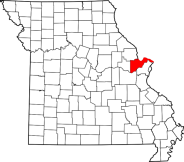Brief
History:
Saint Charles is the
first permanent white settlement on the
Missouri River, and was
settled before the American
Revolutionary War. Saint Charles was
settled in 1769 by Louis
Blanchette, who was a French
Canadian fur trader and hunter. By virtue
of authority given
him by the Governor of Upper
Louisiana, he established a post in Saint
Charles under the
Spanish Governor. Blanchette was its
first Civil and Military Commandant. He
came here
five years earlier on a hunting and
exploring trip, and was delighted with the
location and
excellent hunting and fishing. He
returned to his home St. Louis de Lauzon,
a small town near
the Capitol city of the province of
Quebec, Canada. There he gathered a few
followers who
were fur traders, and with his
supplies returned here in April 1769. He
called the settlement
Les Petites Cotes (The Little
Hills). He established his post at what is
now City Block 20, near
Blanchette Creek which flowed into
the Missouri River. He built several log
houses, a log church
for the soul, and a grist mill for
the body. Blanchette established a
successful fur trading
business, and he served as
Commandant until his death in 1793. He was
followed by Don
Carlos Tayon as Commandant, who
remained in command until 1801, when James
Mackay
took office, and served as
Commandant until March 9, 1804.
In 1791 when the Catholics built
their second church off Main Street facing
what is now
Jackson Street, Manuel Perez,
Lieutenant Governor of Louisiana,
dedicated the church on
November 7, 1791. Saint Carlos
Borromeo was selected as the Patron Saint
of the Church.
The name was shortened to harmonize
with the name of Charles IV, King of
Spain. That
same day Manuel Perez officially
change the name of the village from Les
Petites Cotes to
San Carlos. This was anglicized to
Saint Charles after the Louisiana
Purchase. Since the
commemorative day of March 9, 1804,
the day of the raising of the three flags,
the town has
been called Saint Charles.
|



